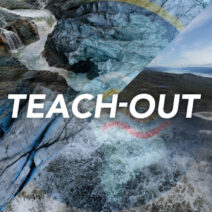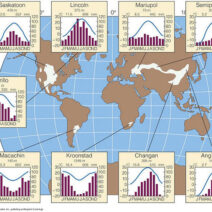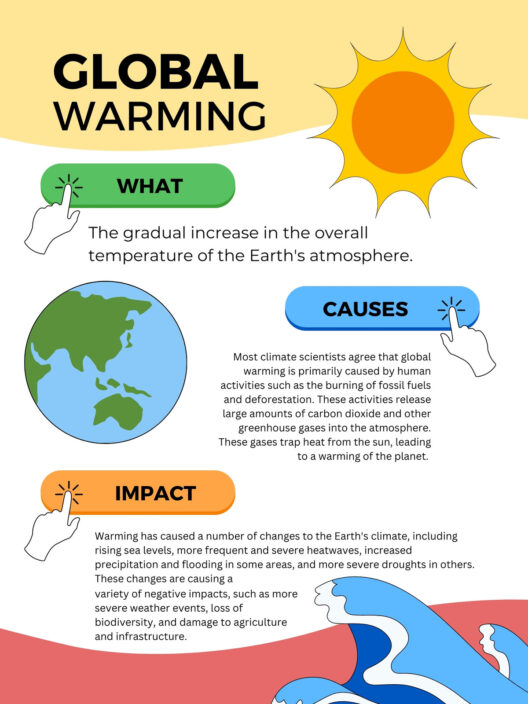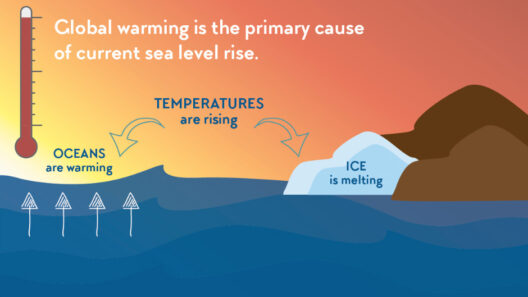As climate change exponentially accelerates, the phenomenon of rising sea levels is becoming increasingly ubiquitous across the globe. Coastal territories, once thriving ecosystems and populated havens, are facing unprecedented encroachments from the ocean’s relentless advance. So how much land has been lost to this slow but insidious tide? And what are the deeper repercussions of ocean-level increase on coastal land, communities, and environments? Exploring these pressing questions unveils a narrative of loss intertwined with the urgent need for climate action.
Global sea levels have risen approximately 8 to 9 inches since 1880, largely due to thermal expansion of seawater and the melting of ice sheets and glaciers. However, this number, while impressive, becomes even more alarming when one considers projections that suggest an increase of 1 to 4 feet by the end of the century if current trends persist. This staggering rise portends a future where coastal land, homes, and ecosystems are not just threatened but irrevocably altered.
According to recent estimates, nearly 40% of the world’s population lives within 100 kilometers of a coast. This figure is critical, as it indicates that billions of lives hang in the balance. The encroachment of the sea is not a distant inevitability; it is a present reality for many.
Delving into empirical data, coastal areas are diminishing at alarming rates. For example, regions like Louisiana in the United States have been losing an astounding 24 square miles of land each year—a loss that translates into the equivalent of one football field every hour. This devastation is compounded by factors such as erosion, subsidence, and the increasing frequency of extreme weather events.
The transformation of once-bountiful land into unusable territory unfolds a complex tapestry of consequences, especially for the ecosystems reliant on these zones. Saltwater intrusion, for example, alters the delicate balance of freshwater supplies in coastal wetlands, critically affecting agriculture, flora, and fauna.
In addition to the ecological ramifications, the socio-economic impacts of land loss are profound and multifaceted. Coastal communities face displacement as their homes become untenable, conjuring images of entire populations forced into migration—a phenomenon sometimes referred to as environmental refugees. In cities like Miami, escalating tides lead to the phenomenon known as “sunny day flooding,” resulting in submerged streets even during clear weather. These scenes serve as stark reminders of the present dangers, prompting immediate conversations about urban planning and infrastructure resilience.
The Urban Planning Paradigm Shift: Adapting to Rising Tides
The ramifications of land loss challenge traditional urban planning methodologies, as proactive strategies must replace reactive measures. Coastal areas must embrace adaptive architecture, elevating buildings, retrofitting older infrastructures, and reimagining land use. These measures include the construction of seawalls, living shorelines, and even the restoration of mangroves and wetlands—natural defenders against tidal incursions. Solutions that incorporate nature, integrating ecosystems into urban environments, create dual benefits: they shield populations from rising seas while fostering biodiversity.
Moreover, these adaptations must pivot on community engagement. Stakeholders at all levels—from government officials to local residents—must collaborate to forge comprehensive strategies that not only address immediate risks but also weave resilience into the fabric of coastal urban design. The key lies in prioritizing sustainability and unearthing innovative funding methods to finance these projects.
Educational platforms and awareness campaigns also play a vital role in preparing communities for the impending challenges. Imbuing a sense of urgency, informing residents of the potential dangers, and promoting proactive preparedness can galvanize local actions against climate impacts.
Beyond the Shores: Understanding Global Disparities
The issue of rising sea levels is not homogenous; rather, it evokes disparities that underscore the urgent need for a just climate response. Developing nations, particularly those nestled in global hot spots like the Maldives, Bangladesh, and small island nations, are at higher risk. With limited resources to adapt, these regions confront existential threats as their entire geographic identities hang in the balance.
Ocean-level increase serves as an amplifying force, exacerbating already existing vulnerabilities in these communities. International discourse must shift towards equitable solutions that transcend borders, with wealthier nations assuming responsibility through funding and technology transfers. The interdependence of nations in addressing climate change forms the bedrock of global initiatives—the Paris Agreement being one notable landmark in this regard.
Looking Ahead: Resilience in the Face of Change
The loss of coastal land to rising sea levels encapsulates a narrative fueled by urgency and reflection. The ways in which we respond to this crisis will define future generations’ experiences and access to their home environments. The imperatives are clear: innovate urban planning, enhance international cooperation, and foster community resilience to combat the omnipresent tide of change.
To confront the challenges posed by rising oceans, it is essential to cultivate a multi-faceted approach that synthesizes ecological conservation, technical innovation, and social equity. While the sobering reality of lost land looms large, the potential for a connected, informed, and engaged constituency provides a glimmer of hope for navigating the unpredictable waters ahead. Only by collectively confronting this crisis can we hope to safeguard not just our coasts, but our planet’s future.








